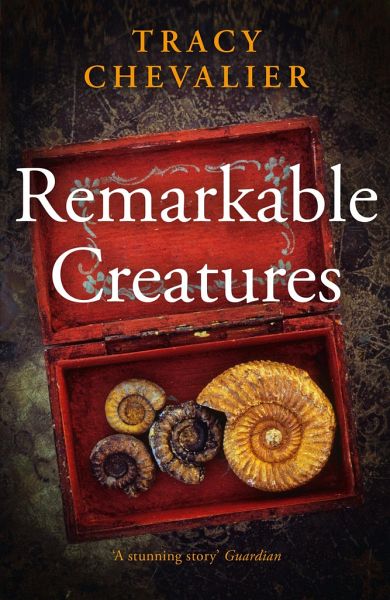


Washington, D.C., native Tracy Chevalier's novel Girl with a Pearl Earring was published in 1999 and made into a movie of the same name in 2003. had no idea what it was - thought it was a crocodile - and went on to discover another ancient marine reptile called a plesiosaur."

"I learned from the display that she was a working-class girl who had lived in Lyme Regis, which is on the south coast of England, and had been fossil hunting with her father, and one day she and her brother discovered a huge specimen of what turned out to be an icthyosaur, an ancient marine reptile about 200 million years old. "I had never heard of her," Chevalier tells Mary Louise Kelly. At its center is a pioneering 19th century fossil hunter named Mary Anning, whom Chevalier first encountered one day while visiting a small museum about dinosaurs. That book, her most famous, tells the story of a Dutch teenager who became a maid in the Vermeer household - and the subject, as Chevalier imagined it, of one of his most famous works, Girl with a Pearl Earring.Ĭhevalier's newest novel is called Remarkable Creatures. She has written books set in medieval France, 18th century London and 17th century Holland - specifically, in the home of painter Johannes Vermeer. It reminds us that friendship can outlast storms and landslides, anger and and jealousy.Novelist Tracy Chevalier has made a career of bringing history to life. The strong bond between Mary and Elizabeth sees them through struggles with poverty, rivalry and ostracism, as well as the physical dangers of their chosen obsession. In danger of being an outcast in her community, she takes solace in an unlikely friendship with Elizabeth Philpot, a prickly London spinster with her own passion for fossils. Working in an arena dominated by middle-class men, however, Mary finds herself out of step with her working-class background. Remarkable Creatures is the story of Mary Anning, who has a talent for finding fossils, and whose discovery of ancient marine reptiles such as that ichthyosaur shakes the scientific community and leads to new ways of thinking about the creation of the world.

With its long snout and prominent teeth, it might be a crocodile – except that it has a huge, bulbous eye. In 1810, a sister and brother uncover the fossilized skull of an unknown animal in the cliffs on the south coast of England.


 0 kommentar(er)
0 kommentar(er)
